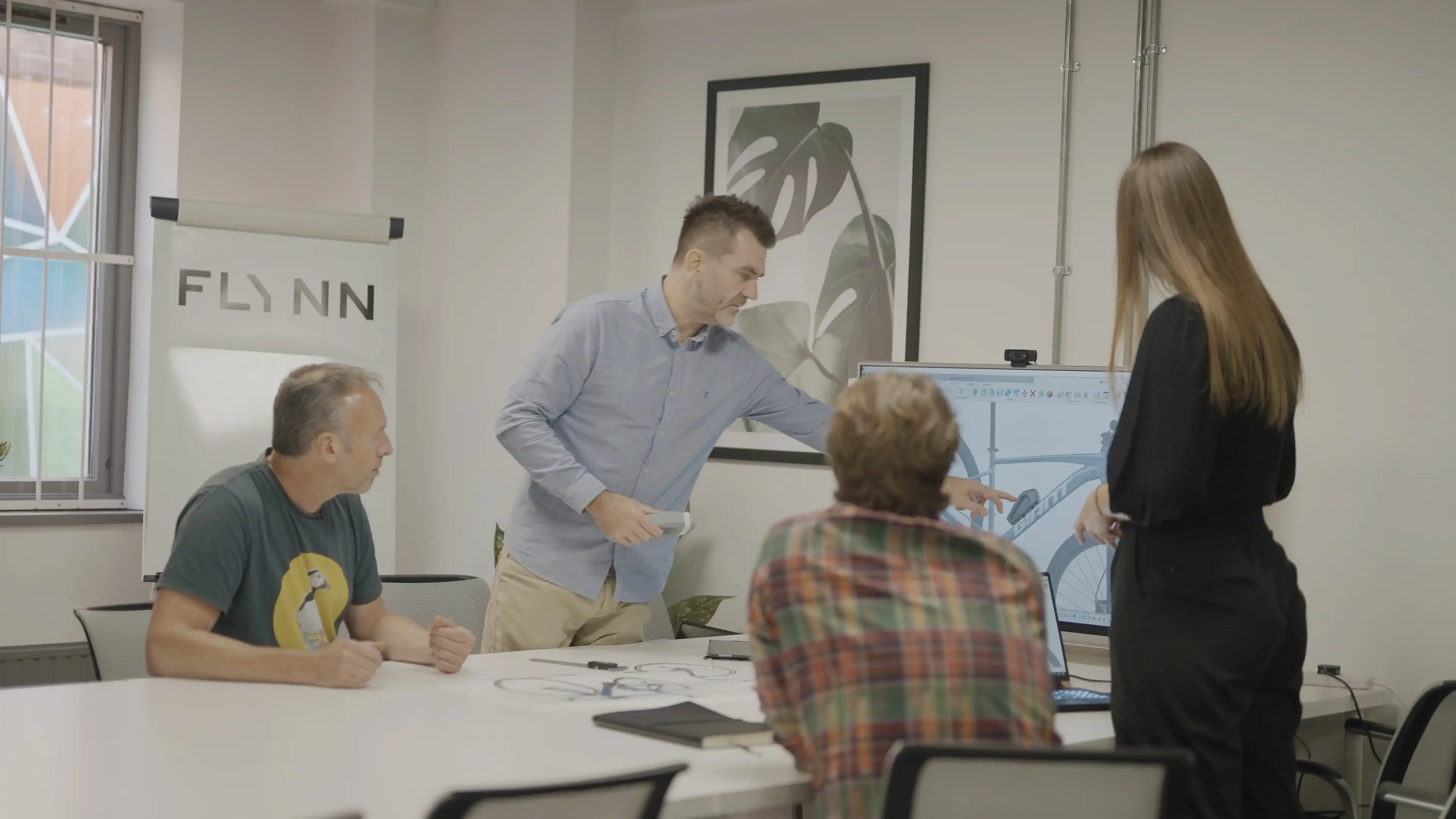Prototype – an A-Z of Product Design & Development
Prototype – an A-Z of Product Design & Development
Take a behind the scenes look at what goes into creating a prototype
The prototype. For some, it conjures images of futuristic concept cars, vacuum cleaner designs or industrial Research and Development programmes. For others, a prototype is the fruit of the labour born from an idea and countless hours of trial and error in a garden shed, home workshop or garage. Whatever the scale or form, whether you’re a weekend inventor, a vibrant start-up or an established company, a prototype represents a tangible outcome of a design process. It’s the materialisation of an idea into something you can see, hear and feel.
And of course, transforming an original idea into a prototype design opens the doors to exciting and potentially boundless possibilities of commercial production.
But how do we get to that point?
Welcome to the wonderful world of product development.
At Flynn Product Design, our passion and expertise in the design process combined with the latest technology, means we’re uniquely positioned to accompany the development of your design project. By overcoming challenges and finding optimal solutions, we’re dedicated to working with individuals and companies on a one-to-one basis, helping turn ideas into actions - resulting in a final prototype design.
Here’s a behind-the-scenes look at the processes that go into creating a prototype.
What is a prototype?
A prototype is a model, mock-up or sketch of a new design or proposed solution to a problem. As a tangible or materialized form of one or more ideas, the prototype plays a crucial role in the design process. Prototypes allow designers to learn more about user’s needs, to analyse and evaluate performance as well as refining and improving product ideas and solutions.
Being able to see, feel and test materials, visual aspects, functionality and ergonomy of designs make prototypes the most common precursor to the manufacture and commercialisation of product ideas.

Stages in prototype design
Rather than being a starting point, a prototype is usually the end result of a product design process. At Flynn product design, we know that every project is different and can be non-linear. However, there are some general phases to prototype design that are frequently of immense value to work through, ultimately saving time and resources.
Here’s our approach to designing prototypes:
Understand the problem
Most inventions or product design ideas exist because they offer something new in potentially solving a problem or improve an existing design. In addition, ideas are frequently accompanied by some level of commercial aspiration.
As designers, our first step is to ask the right questions in order to recognise and truly understanding the problem that the product or idea is anticipated to solve. By fully considering all elements of the problem including the limitations, anticipating risks, analysing existing solutions, understanding users and evaluating commercial potential, we can (re) define problems more precisely.
The objective is to avoid assumptions and positively challenge the thought processes behind the proposition. By doing that, we’re able to establish the USPs of ideas and fully consider the proposition before launching into patents and considering design options.
Find out more about our one-to-one confidential design workshops.
By breaking down the ‘problem analysis’, designers move towards the next stage of the process – the brief.
Define a problem statement
In design speak, the ‘problem statement’ defines a problem based on the results of the initial research phase. The statement frames an issue from a user’s perspective as a need that has not been adequately met. The purpose is to guide designers towards actionable solutions based on the root cause of a problem. The result is known as a PDS (product design specification) or ‘the design brief’.
At Flynn design, our belief is that a product is as good its brief. From that point, we take a step closer to the prototype by beginning to look at generating or analysing potential design solutions. The brief is the roadmap that ensures the project remains on track and progresses in the right direction.

Develop ideas
Once the brief is established, the design process gears up to generating ideas and exploring new solutions and innovations. Ubiquitously known as ‘thinking outside the box’, the ideation phase challenges designers to questioning everything and uncover unique design perspectives.
Again, we know that every design project is unique and our experience guides us towards the most efficient adaptation of the design process based on your individual project. The finality of the ideas phase is to select potential creative and innovative solutions to develop into prototypes which can then be tested.
We’re often asked the question:
What is prototyping in design?
Prototyping is a design process that is used to bring ideas to life, either materially, visually, aesthetically or functionally. Creating a physical or visual prototype is essential to establish if an idea is a viable solution to the problem set out in the design brief. As such, a prototype allows us to test the viability or effectiveness of an idea.
One important factor of prototyping is to have a clear goal of what you want to test. The prototype is a means to an end when it comes to informing the design process which is why there are a wide number of different prototypes:
- Visual Prototypes – used to represent the scale, appearance and aspect of a design without functionality
- Proof-of-Principle Prototypes - used to test some particular functional aspects of a design
- Working Prototypes – used to represent all of the functionality of a final design
Projects frequently use a range of sketches, mock-ups and models throughout their duration to inform the design process. Sometimes a simple proof-of-concept prototype may be sufficient to demonstrate the basic elements of a design.
On the other hand, a functional or pre-production Prototype, featuring both the intended function and appearance of a design may be necessary to add weight to your pitch to potential investors or manufacturers.
Prototyping techniques
At Flynn product design, we use innovative and high-performance prototyping techniques from FDM printing to SLS, SLA, CNC and Metal Sintering, Vacuum Casting, RIM Casting based on your requirements.

Contact us to discuss your requirements. We're here to help.
Test. Evaluate. Improve. Refine
A final result prototype is one that has been tested, evaluated, improved and refined on the basis of the brief. Our experience in these steps as part of the design process saves time and expense as well as achieving a better end result.
It’s stating the obvious, but quality, experience and thought processes resulting in the production of your prototype can make a fundamental difference to the attractiveness and marketability of your idea in a risk-averse environment.
For companies, start-ups and individuals alike, we’re here to help you take a big step closer to the successful manufacture and commercialisation of your product idea.
We are here to talk about how to get a prototype product made , use the form to send us a note or simply call 0117 2306887
We provide businesses with product design consultancy, industrial design, prototype design & related services.
.avif)


